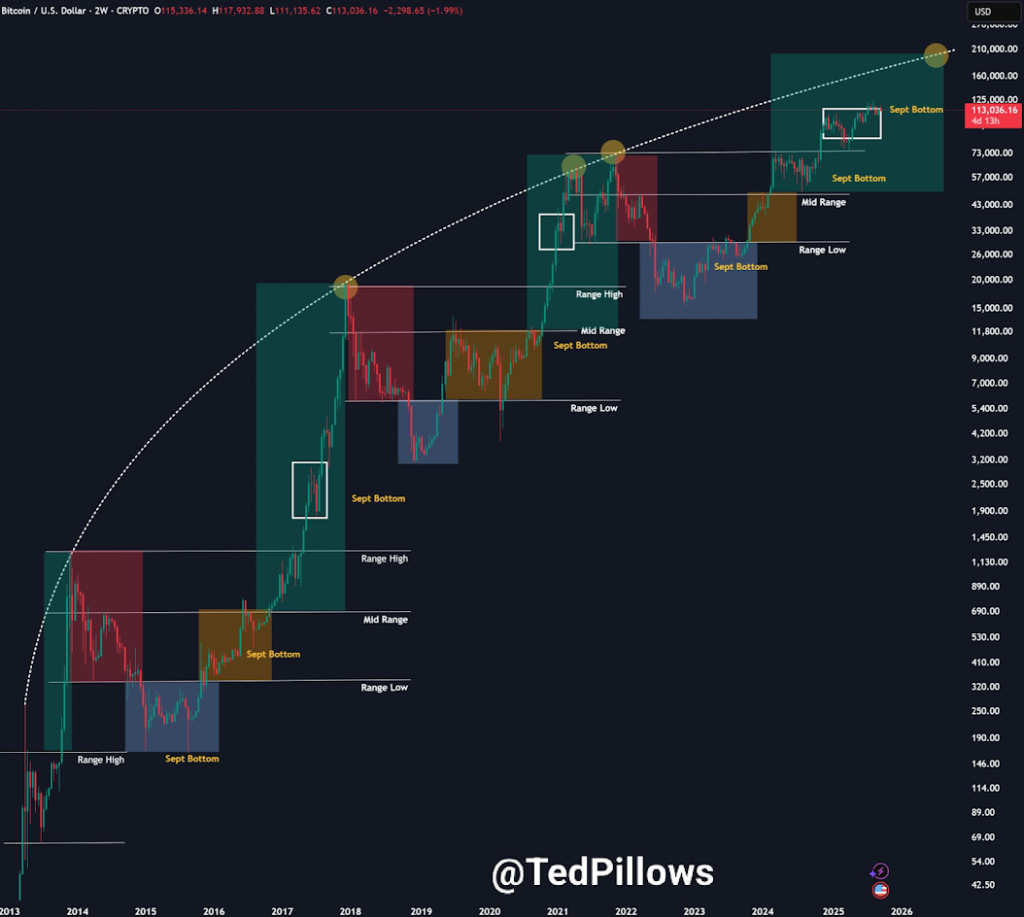
The post Why Bitcoin Price is Crashing Today? When Can BTC Price See Reversal? appeared first on Coinpedia Fintech News
The cryptocurrency market faced another dip today as Bitcoin price movements dragged altcoins lower. Despite the decline, many analysts say these fluctuations are part of a broader Bitcoin trading range, not a market collapse.
Investors often describe the process as “five steps forward, two steps back,” highlighting the cyclical nature of Bitcoin and crypto markets.

In two days, roughly $17.5 billion in Bitcoin options are set to expire, with a max pain point at $107,000. Historically, Bitcoin often moves toward max pain during large options expirations.
“$BTC usually bottoms in September. A big leg down may happen before a reversal, especially with this massive options expiry,” noted a crypto trader.
Recent market activity shows a Bitcoin liquidity sweep that liquidated over-leveraged longs between $109,000 and $111,000. The next cluster of liquidity lies around $107,000–$108,000, which could trigger further short-term volatility.
“Deeper liquidity sweeps often spark aggressive shorting but can set up a sharp reversal once cleared,” analysts warned.
This setup highlights the importance of monitoring Bitcoin liquidity levels and price reversal signals in September 2025.
Raoul Pal, founder of Global Macro Investor, suggests that Bitcoin’s historic four-year cycle, driven by halving events, may now have stretched into a five-year Bitcoin market cycle.
“U.S. debt maturity extensions in 2021–22 pushed the average weighted maturity from four years to 5.4 years,” Pal said. “This could shift the Bitcoin cycle peak to Q2 2026 instead of 2025.”
This insight may help investors adjust strategies for long-term Bitcoin price cycles and anticipate future market highs.
Pal emphasized Bitcoin’s tight correlation with the ISM Purchasing Managers’ Index (PMI), a major indicator of U.S. economic trends:
“Currently, the ISM is below 50, marking the longest contraction streak in decades,” Pal said. “Periods when the ISM was below 50, like 2015–16 and 2019–20, historically preceded major Bitcoin bull runs.”
This means that Bitcoin price movements often mirror U.S. economic cycles, creating opportunities for strategic investment.
The Federal Reserve’s sustained high interest rate environment has put pressure on Main Street while Wall Street benefits from asset debasement.
Pal noted, “Interest rates need to decline to roll over U.S. debt and restore economic expansion. Until then, Bitcoin tends to follow the ISM’s contractionary trend.”
Investors monitoring the Bitcoin market recovery under high interest rates should expect limited short-term upside until economic conditions improve.
Stay ahead with breaking news, expert analysis, and real-time updates on the latest trends in Bitcoin, altcoins, DeFi, NFTs, and more.